 In support of their Blitzkrieg tactics, Germany took full advantage of their newly built boulevards and autobahn road networks to quickly and easily move mechanized material from the factory floor to the front. Mobility was key in the Blitzkrieg, and one integral cog in Reich’s mechanized war machine was the Faun heavy transporter. The Faun L900, manufactured from 1937 to 1939, was one of the heaviest German trucks in service during WW2, weighing in at an impressive 8,800 kilograms, measuring 10,4 meters in length and with a cargo capacity of 10,000 Kg, the Faun L900 and SdAh 115 trailer were perfectly suited to carry the lighter weight tanks of the time (Pz.1, Pz.II, Pz.,38). In later years, the necessity of war required that divisions replace their light tanks with heavier armor, and with that, the Faun’s armor transport services came to a conclusion. The vehicles, however, remained in active service throughout the war on all front working to troops and other lighter vehicles.
In support of their Blitzkrieg tactics, Germany took full advantage of their newly built boulevards and autobahn road networks to quickly and easily move mechanized material from the factory floor to the front. Mobility was key in the Blitzkrieg, and one integral cog in Reich’s mechanized war machine was the Faun heavy transporter. The Faun L900, manufactured from 1937 to 1939, was one of the heaviest German trucks in service during WW2, weighing in at an impressive 8,800 kilograms, measuring 10,4 meters in length and with a cargo capacity of 10,000 Kg, the Faun L900 and SdAh 115 trailer were perfectly suited to carry the lighter weight tanks of the time (Pz.1, Pz.II, Pz.,38). In later years, the necessity of war required that divisions replace their light tanks with heavier armor, and with that, the Faun’s armor transport services came to a conclusion. The vehicles, however, remained in active service throughout the war on all front working to troops and other lighter vehicles.
Kharkov StuG
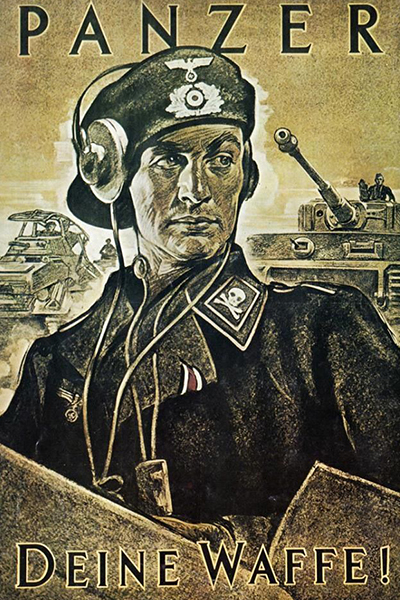 If “sexy” is an appropriate word to use to describe a lethal military vehicle, then the StuG certainly deserves a walk on the modeler catwalk. It’s attractive, low profile, and aggressive wide stance certainly demands a second glance. Add a pair of Ostketten tracks to the outfit and, at least in my eyes, the StuG is a thing of beauty.
If “sexy” is an appropriate word to use to describe a lethal military vehicle, then the StuG certainly deserves a walk on the modeler catwalk. It’s attractive, low profile, and aggressive wide stance certainly demands a second glance. Add a pair of Ostketten tracks to the outfit and, at least in my eyes, the StuG is a thing of beauty.
When this opportunity came to contribute a StuG for this publication, I had a wide choice of variants and time periods. My decision of which variant to build was almost immediate, I wanted to portray a vehicle from the desperate and pitched Kharkov battles during the winter of 1942-1943. This time frame led to a number of choices, in the end, I decided upon the StuG III f/8 variant as produced by Dragon.
The Ausf. F production of the StuG III began March, 1942 and was a direct reaction to the war experiences for the need to find a foe to combat Russian tanks, specifically the T-34. Equipped with the high velocity of 7.5 cm StuK 40 L/43 long barrel gun, the upgraded platform proved to be an instant influence on the battlefield. The Ausf. F/8 version of the StuG appeared in September of 1942. The name is derived from the chassis version of the Panzer III upon it was based, the 8th, or Ausf J/L. The F/8 entered production armed with the new 7.5cm StuK 40 L/48, which had a greater impact against the most common tank of the time, the T34. The new hull featured a redesigned rear-plate, with larger louvers to improve engine cooling. which jutted slightly forward of the front of the hull, and were drilled with holes for towing. Initially designed to be a welded plate of front armor, during the production run of the F/8 the extra armor went from being welded in place to being bolted on, in order to save production time.
Burn Baby Burn
 I have been a fan of the Mad Max movie series since inception beginning with the 1979 release of Mad Max, up through and including the recent Fury Road release. And as such, this is the backdrop for this dystopian, Post-apocalyptic vehicle overhaul. At first glance, it might appear that all of the crazy looking vehicles that appear in this movie world are nothing more than reconstituted junk-yard heaps, cobbled together without regard to form or function. However, on closer examination, it is clear each vehicle within the films are unique, thought-out, and serves a purpose. I recall reading one of the concept artists state that what one must understand is that these vehicles are a symbol of personal pride and craftsmanship, an extension of their personalities. In the end, what you have, are a bunch of very cool looking cars!
I have been a fan of the Mad Max movie series since inception beginning with the 1979 release of Mad Max, up through and including the recent Fury Road release. And as such, this is the backdrop for this dystopian, Post-apocalyptic vehicle overhaul. At first glance, it might appear that all of the crazy looking vehicles that appear in this movie world are nothing more than reconstituted junk-yard heaps, cobbled together without regard to form or function. However, on closer examination, it is clear each vehicle within the films are unique, thought-out, and serves a purpose. I recall reading one of the concept artists state that what one must understand is that these vehicles are a symbol of personal pride and craftsmanship, an extension of their personalities. In the end, what you have, are a bunch of very cool looking cars!
My wasteland is my workbench, and upon it rides a Revell/Monogram 1966 Chevy Fleetside pickup truck. I chose this vehicle for no other reason than my dad had one of these when I was young, and I like the way it looks. What would it become? Fingers grip tight around the X-Acto, the smell of glue surrounds me. Strap in and let’s ride! Burn, Baby Burn!
Mobile Worker MW-01 Late Type [MASH]
 The Mobile Worker MW-01 Model 01 Final Type is a mobile weapon that appears in the Mobile Suite Gundam: The Origin OVA . It belonged to the Autonomous Republic of Zeon and would ultimately lead to the development of the mobile suit technology.
The Mobile Worker MW-01 Model 01 Final Type is a mobile weapon that appears in the Mobile Suite Gundam: The Origin OVA . It belonged to the Autonomous Republic of Zeon and would ultimately lead to the development of the mobile suit technology.
On the dark side of space colony Side 3, the last improved and developed Mobile Worker MW-01 Model 01 Final Type, a prototype experimental man-made mobile weapon led by Dozle Zabi was under development. Improvements have been made to each part based on the data from the Mobile Worker MW-01 Model 01 Late Type, and opinions from the test pilots. Improvements were made on the chest armor around the cockpit to protect the pilot from incoming attacks.
The space version is equipped with thrusters and verniers for attitude control in outer space on the shoulders, back, torso and legs, and was used by the Autonomous Republic of Zeon in the recovery of space debris in its neighboring zones. Its attitude control technology and operational data in space were used as a reference in the development of mobile suits.
Pulling Power – Holt 75 Tractor
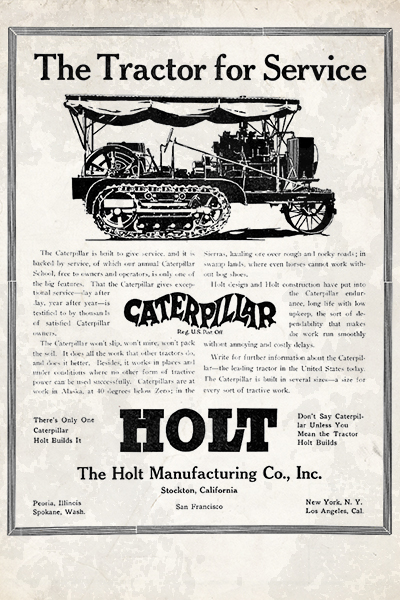 I recently took a bit of a break from my usual modeling subjects, those being armor, armored cars, and other types of earthly vehicles and instead dabbled in the world of those winged things, specifically a couple of WW1 aircraft. It was a nice and needed change of pace. One of the takeaways from that experience was the process of working on the many subassemblies, each as a separate little jewel of a model – from construction through painting and even weathering – and then moving onto the next element until finally it’s brought all together.
I recently took a bit of a break from my usual modeling subjects, those being armor, armored cars, and other types of earthly vehicles and instead dabbled in the world of those winged things, specifically a couple of WW1 aircraft. It was a nice and needed change of pace. One of the takeaways from that experience was the process of working on the many subassemblies, each as a separate little jewel of a model – from construction through painting and even weathering – and then moving onto the next element until finally it’s brought all together.
This now brings me to this current project, Roden’s release of the Holt 75 tractor. As with so many early 20th-century war machines, the Holt 75 began its career in civilian service as an agricultural tractor but came into its’ own while being utilized during the construction of the Los Angeles aqueduct system beginning in 1909. With the outbreak of WW1, there was a need for heavy prime movers to haul around the Queens of the Battlefield, the heavy artillery pieces. Durable, able to maneuver over uneven terrain, and readily available, the British War Department placed orders for the tractor, of which some 2000 saw service with the British, French and American forces 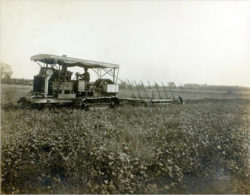 during the course of the war.
during the course of the war.
Flying Dutchman : Fokker DVII
 When World War I ended in 1918, the Armistice required, among other things, that Germany turns over 1,700 warplanes, including “all D.VII’s.” Thus did the Allies compliment the boyish Dutchman whose highly maneuverable fighter plane, (the Fokker D.VII) boasted machine guns that could fire through a whirling propeller without hitting it. And thanks to the inventive Anthony Fokker and the Fokker D.VII, German aces terrorized Allied pilots in the closing months of the war; and the victors wanted to monopolize that fearsome technology.
When World War I ended in 1918, the Armistice required, among other things, that Germany turns over 1,700 warplanes, including “all D.VII’s.” Thus did the Allies compliment the boyish Dutchman whose highly maneuverable fighter plane, (the Fokker D.VII) boasted machine guns that could fire through a whirling propeller without hitting it. And thanks to the inventive Anthony Fokker and the Fokker D.VII, German aces terrorized Allied pilots in the closing months of the war; and the victors wanted to monopolize that fearsome technology.
Fokker was surely some kind of genius. He taught himself to fly, then to build flying machines.. This was in 1911, when he was 21, just eight years after the Wright Bros. invented powered flight. His ambition took flight as well. Upon the onset World War I, he applied for German citizenship because that was a requirement if he was to sell aircraft to the German air force. During the First World War, the Dutchman Anthony Fokker built airplanes first at his factory located at the Johannisthal airfield, near Berlin. In 1913 he moved to Schwerin. During these years, many types were designed and build there, among which was the famous ‘Eindecker’ series, and the Dr.I triplane. At the end of 1917, Fokker was out of the picture as a supplier for fighter aircraft. This is the time where the story of the D.VII starts.
Where the Streets Have No Name
 As military modelers we often throw around the phrase; “living in the golden age of modeling”. And while it is certainly true that the variety and quality of the kits that are now available are mind-blowing, perhaps a more accurate term might be “accessibility”, meaning, that our access to real-life and real-time “inspiration” (for lack of a better term) is now unprecedented. The world is at our fingertips by simply logging into our Facebook feed, watching a YouTube video or by joining any one of the many specialized groups, we are provided with unfiltered access to world events. I wouldn’t imagine that when Trumpeter released the Russian 2S3 Akatsiya in 2013, they had any idea that these vehicles recent “claim to fame” would be in the deadly, close-quarter urban battlefields of Syria. However, here it is – from the pictures and YouTube videos coming out of Syria that I found inspiration for my take on this Russian-built heavy hitter.
As military modelers we often throw around the phrase; “living in the golden age of modeling”. And while it is certainly true that the variety and quality of the kits that are now available are mind-blowing, perhaps a more accurate term might be “accessibility”, meaning, that our access to real-life and real-time “inspiration” (for lack of a better term) is now unprecedented. The world is at our fingertips by simply logging into our Facebook feed, watching a YouTube video or by joining any one of the many specialized groups, we are provided with unfiltered access to world events. I wouldn’t imagine that when Trumpeter released the Russian 2S3 Akatsiya in 2013, they had any idea that these vehicles recent “claim to fame” would be in the deadly, close-quarter urban battlefields of Syria. However, here it is – from the pictures and YouTube videos coming out of Syria that I found inspiration for my take on this Russian-built heavy hitter.
Chariots of Firepower
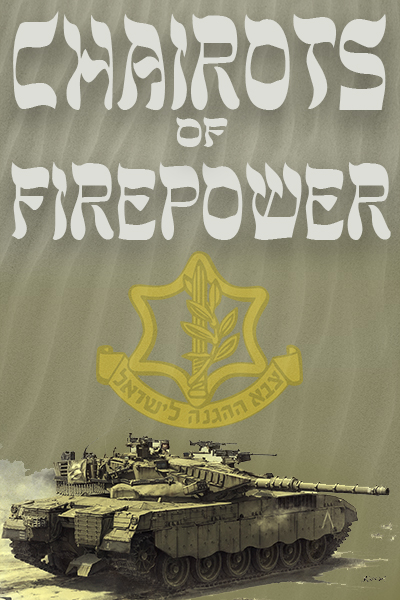 The Merkava or ”Chariot” is Israel’s first domestically designed and produced main battle tank. It was developed in the late 1970’s after Israel was unable to procure the British Chieftain. Incorporating the lessons learned by the IDF during their past wars.
The Merkava or ”Chariot” is Israel’s first domestically designed and produced main battle tank. It was developed in the late 1970’s after Israel was unable to procure the British Chieftain. Incorporating the lessons learned by the IDF during their past wars.
The Merkava was first used in combat during the 1982 Lebanon War, where Israel deployed 180 units. The wartime experience brought to light some vehicle shortcomings. These shortcomings were noted and adjustments were designed into the MkII production models. The Mk.I tanks were retrofitted with some of the new Mk.II features – such as the installation of chain netting to the rear of the turret in order to eliminate a shot trap. The results became known as the Mk.I Hybrid, which is the subject of this article.
Shoot to Thrill
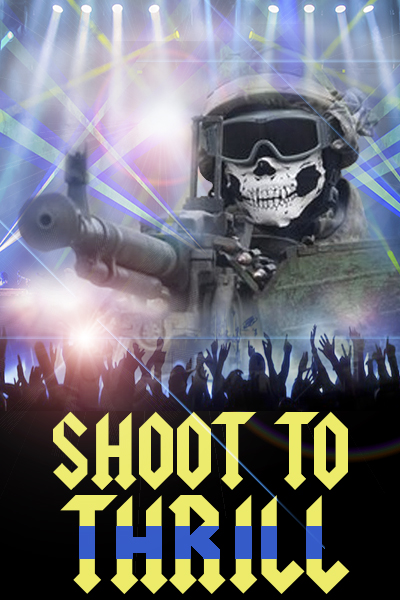 The images that have come to us during these past years from the Ukrainian Crisis have certainly have been compelling; often showing the despair, tragedy, and destruction that comes with war. But for modelers, it has also provided us with a wealth of real-time, modern reference materials; captured and re-purposed vehicles with colorful identification bands, make-shift vehicles, improvised armor and gaudy camouflage schemes. These “traditional” references are all well-n-good, but when you can combine armor with rock-n-roll – then you have it cranked to 11!
The images that have come to us during these past years from the Ukrainian Crisis have certainly have been compelling; often showing the despair, tragedy, and destruction that comes with war. But for modelers, it has also provided us with a wealth of real-time, modern reference materials; captured and re-purposed vehicles with colorful identification bands, make-shift vehicles, improvised armor and gaudy camouflage schemes. These “traditional” references are all well-n-good, but when you can combine armor with rock-n-roll – then you have it cranked to 11!
The reference for this project came from 2 images, found online, showing a Ukraine force BRDM-2 situated on a lonely road – apparently providing check-point services. A worn, scuffed and distressed vehicle that had obviously seen its share of use – including the requisite white I.D. stripes. What makes this vehicle takes it to an 11 is the addition of a large AC/DC logo emblazed on either side the vehicle. Oh yea, Rock-n-Roll, Baby!
French Firepower AMX13/90
 It’s usually at about this point in most modeling articles that the author provides a brief description of the vehicle in question. Quite honestly, if I were to give any sort of technical or service description of the AMX-13/90 it would be at best a labored, semi-creative re-write of a Wikipedia description – or worse – simply blatant plagiarism. That is to say, I really do not have any insight or particular knowledge into this vehicle – no more so than any of you could easily find for yourself with a few key-strokes. What I can speak to, however, is to how this AFV’s relative obscurity (at least to me anyway) and quirky turret drew my attention. The simple fact of the matter is that it looks pretty cool!
It’s usually at about this point in most modeling articles that the author provides a brief description of the vehicle in question. Quite honestly, if I were to give any sort of technical or service description of the AMX-13/90 it would be at best a labored, semi-creative re-write of a Wikipedia description – or worse – simply blatant plagiarism. That is to say, I really do not have any insight or particular knowledge into this vehicle – no more so than any of you could easily find for yourself with a few key-strokes. What I can speak to, however, is to how this AFV’s relative obscurity (at least to me anyway) and quirky turret drew my attention. The simple fact of the matter is that it looks pretty cool!
